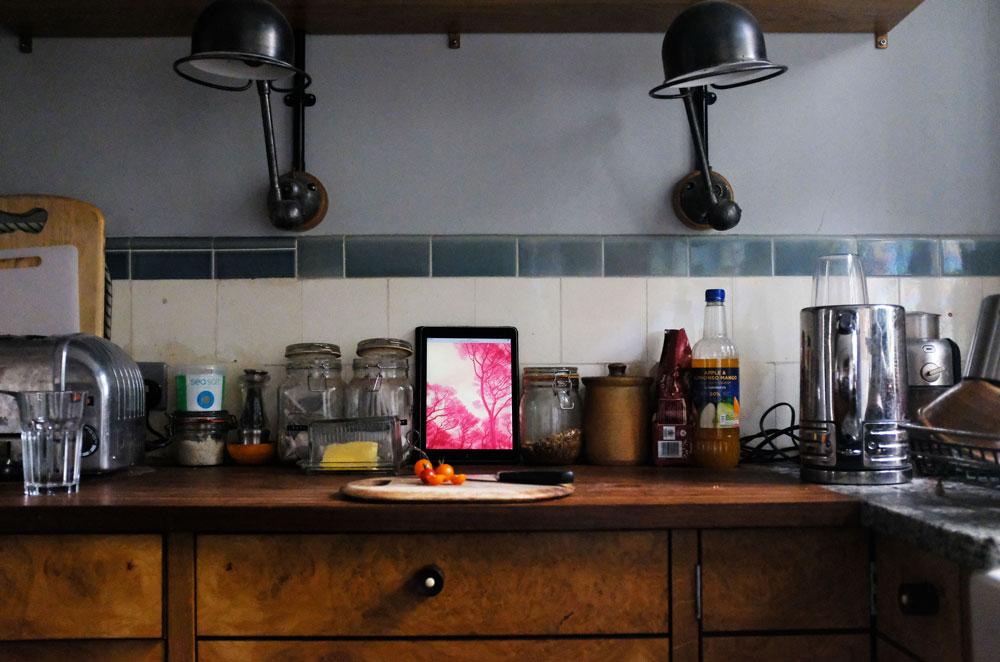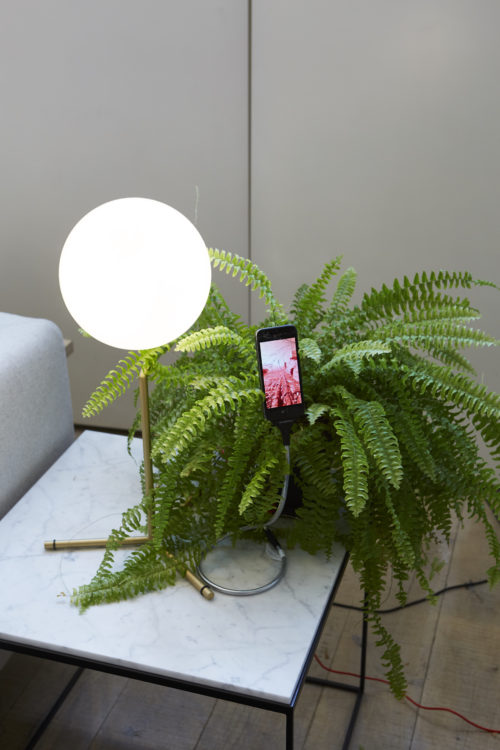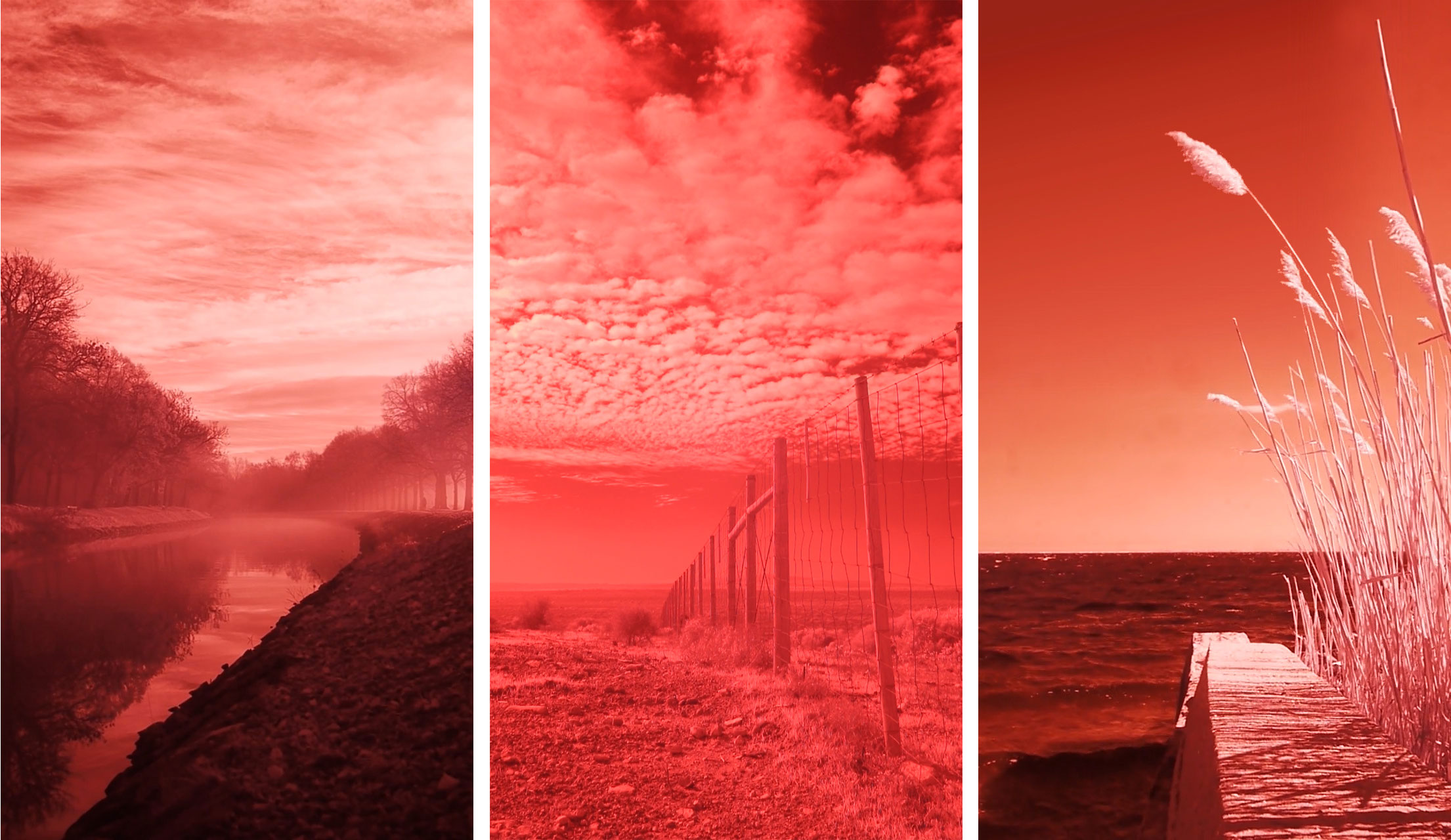Evan Roth Created a Work of Net Art That You Can Live With

What if we could use the internet to connect to what it most often distracts us from: the natural world? In his Creative Capital project, Red Lines, Evan Roth investigates the physicality of the web as a means to unite and reconnect with changing digital and natural landscapes. Since 2014, Roth has been documenting coastal sites where undersea internet cables emerge from the waters, and with Creative Capital funding, he shot new footage in Cape Town, New York, Hong Kong and Buenos Aires. He turned this into a browser-based artwork accessible to anyone with an internet connection, displaying moving images of meditative landscapes that are digitally streamed from servers located at the sites of their documentation. The artist encourages viewers to set up unused screens in their work or living spaces to live with the artwork over the course of its one-year lifespan.
Access Red Lines and use one of your extra screens to set it up around your office or home.
We spoke to Evan Roth ahead of the launch of Red Lines.
Alex Teplitzky: What is Red Lines?
Evan Roth: Red Lines is net art and is viewed on any internet-connected device with a screen (a smartphone, laptop, tablet, etc). The work is meant to be lived with and experienced over the one-year course of the project, so this could be on a phone mounted in your work space or an old laptop sitting on a shelf at home (I have a phone mounted over the sink where I wash dishes at home).
What you will see playing on this screen is a series of very still infrared videos depicting landscapes from different countries at the locations where submarine fiber optic cables reach the shore. Each video plays for roughly 18 minutes and then jumps to a new landscape. The entire sequence contains over 50 videos and runs for over 12 hours.
What the viewer doesn’t see, however, is that Red Lines is a peer-to-peer network that is formed both from other viewers of the work as well as a series of servers located in the same countries in which I filmed. So when the video is playing there is data flowing in both directions (upload and download) to other viewers in the network and to the landscapes that they are seeing on screen.

“Red Lines” displayed in a user’s home.
Alex: Can you talk about the videos you filmed at the locations for the fiber-optic cables? What’s the significance?
Evan: The videos are filmed with a camera that has been modified to shoot in the infrared spectrum, which is the same frequency range of the light that travels through fiber-optic cables. They are all single continuous still shots in portrait orientation of landscapes. Once I arrive at these destinations, the individual works become much more intuitive and driven by the environment. It’s not intended to be a photo journalistic pursuit, but instead more of a personal project aiming to come to different understandings of our current surroundings.
Alex: I’m thinking about other net art projects—very few actually expose the mechanisms of connection that the internet facilitates. Can you explain how this project connects its users? What exactly is the peer-to-peer network in the center panel, and how do you imagine it will look when it’s fully activated by users across the globe?
Evan: While it’s not a huge space, there are a few net-based projects I can think of that deal with the mechanics of the internet: Surfacing by Nicole Starosielski, Erik Loyer, and Shane Brennan, Ingrid Burrington’s Submarine Cable Taps, and the earliest example I know of, War in Yu by OG Vuk Cosic. The net art piece that was foremost in mind when making the work, however, is Olia Lialina’s Summer. The ring of URLs that form the structure of Red Lines is in part an homage to this work.
In terms of how the Red Lines network is formed, it is a peer-to-peer network that is composed of: 1) all of the people currently viewing the work (they become a node in the network that is both downloading and sharing the work) and 2) a series of servers that are located geographically in the same regions in which the video pieces were filmed. The servers are also peers, but they are static in the sense that they are always seeding the work (not coming and going the way individual viewers of the work might). So as you are watching a clip from Cape Town, a portion of that video file is being streamed from South Africa. Other portions of that same video file might be streaming from other geographically specific servers (e.g. Buenos Aires, Hong Kong, Sydney) as well as other active viewers of the work (wherever they may be). By viewing the piece you are not only activating the network, but joining it.
For me, “fully activated” could mean five people or 5,000 people, so in some ways the scale is not so important. I’m actually more excited for when the initial launch phase of the project slows down and the network becomes a smaller group of people that are actually living with the work on a daily basis. Beyond the technical connection between viewers, there is also a shared experience of the work in that the videos are synced. So when I see the Hong Kong landscape change into the New York landscape on my laptop here in Berlin you would witness the same thing at the same time on your screen in New York. We are connected and looking into the same window, but there is no messaging or “liking” functionality. It is shared but intentionally not social.
Alex: It’s interesting that living with the work is the crux of the concept of this piece. I remember when the internet and social media started affecting how businesses were run, so many arts publications speculated on how it would affect the art market. And yet, aside from more easily connecting collectors directly to artists, it hasn’t done much to help people get better access to contemporary art. This piece does that—and as the internet promises unfettered access to information, Red Lines allows free access to an artwork. What does it mean for you to allow your audience to live with the work, rather than forcing them to experience in a gallery or museum setting?
Evan: One way that my practice has changed in the last five years is that I’ve started living with art more. Before I show work publicly I like to have lived with it for at least three months because I feel like (for some kinds of work) you don’t really understand its power or its flaws until after you spent significant time with it. For me, living with art has been a way to form a different kind of relationship with the work, and it’s an experience that (with copy-able media) I think more people could be having.

Video Stills from “Red Lines”
Early on in the piece’s conception when I started to look around at other projects in this space I stumbled into the world of digital media frames, which became a good guide for exactly what I did not want to make. Almost all of these devices present themselves with Silicon Valley style platitudes, and aim to recreate the relationship we are forming with images in our social media streams in our homes. Almost universally these devices boast of bringing thousands of images into the home, high level curation, personal customization and convenience. The kinds of interactions they are promoting with art have more in common with Instagram than anything else, and even include familiar swiping gestures to update content with a flick of a finger (e.g. https://meural.com). I think it’s evidence of the effect gamified images are having on our relationship with visual content, including art. So from the beginning I was thinking about Red Lines as an antithesis to this kind of approach: a free platform for one piece of art with zero customization and no ability to like, heart, slide left or change the channel. I’m hoping that the piece can facilitate a relationship with art through a screen that unfolds slowly over time, and might be some people’s first experience of living with a piece of art.
Alex: You mentioned that you can live with the artwork by changing your everyday habits with your phone. Can you elaborate?
Evan: Dedicating a disused smartphone or laptop to display Red Lines in your home is one way to live with the work. But, it’s also possible to view Red Lines on the phone or computer that you use daily for other tasks. I think the easiest way is to have a docking and charging location that can double as a display space. For example, I have a magnetic mount for my phone on the side of my monitor in my studio (which I’m currently using to answer this question). There are also laptop clips that allow you to connect a phone or tablet to a laptop, which I use sometimes when I’m traveling. And there are software based solutions as well, for example the Side View Firefox plugin, which allows you to have a second frame in your browser window so that you can surf in the left frame and keep Red Lines on view in the right frame.
One advantage I’ve noticed from using my everyday phone to display the piece is that it begins to act as a deterrent to some of the online practices that the work is critical of. I like it when the push notifications start popping up in front of the work—it feels like Silicon Valley complaining that it’s not getting enough attention while I’m looking at a tree move in the wind. This might not be true for everyone, but I find that I’m less likely to check social media if it means I have to turn off the artwork to do so.
My hope is that as more people are introduced to Red Lines, we will begin to see different ways of living with the work that I didn’t expect or intend.

“Red Lines” displayed in a user’s home.
Alex: That’s a very convincing argument to try to live with this work of art. I’m excited to try it! How was Creative Capital’s support helpful in developing your project?
Evan: Creative Capital really allowed me to be proactive about the direction of the work in a way that would not have been possible otherwise. I could make decisions on my own terms and timeline without having to figure out how to fit things into some other program.
To give a concrete example of what Creative Capital support feels like, on their server is my favorite page on the internet… it’s called the “Funding Request Form.” So when I’m stuck trying to figure out how I’m going to be able to afford flying to Cape Town to film for a week I just fill out the form and within a few days I have the money I need to make that happen.
Beyond that specific example, however, I think Creative Capital is really good at helping artists think on a larger and longer time scale with their work. It’s something I will take with me beyond the scope of this project.
Alex: Can you describe Artangel’s involvement with the project?
Evan: Artangel is a charitable arts organization based in London that is probably most well known for commissioning really powerful site specific projects. Last year they shifted focus with an open call for a commission called “Artangel Everywhere,” which overlapped a lot with ways in which I was rethinking how and where my work could be experienced.
Creative Capital support had at this point allowed me to visit and produce new works in New York, Hong Kong and Cape Town and put on an exhibition in Paris called Landscape with a Ruin. When I was giving people tours of that exhibition I noticed I was always really excited at the end to explain that since the work is net based, they could experience it in a different way at home. The transition of the work from the exhibition space and into people’s homes began to feel like a fitting capstone to this series, and this is part of how Red Lines as a project began.
Where Creative Capital allowed me to produce 27 new works in New York, Hong Kong, Cape Town and most recently outside of Buenos Aires, Artangel allowed me to produce Red Lines, which is the peer-to-peer network that brings them all together. I recognize how fortunate I am to have two very trusting and open minded organizations as partners in this work. It is a condition that I am not likely to be able to reproduce and this is an added motivation in making sure that this project is everything that it can be.
Lastly, I’d just like to mention that remaining portions of my Creative Capital and Artangel support will go into filming at least two new locations over the course of the one year in which Red Lines will be active. So those living with the work will notice new landscapes quietly coming into their homes at certain points throughout the year.
Access and read more about Red Lines on the website.
